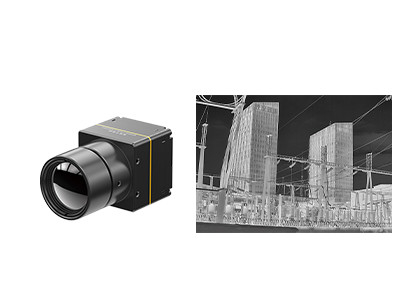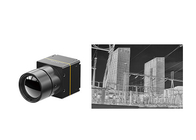-
Thermal Camera Core
-
Thermal Security Camera
-
Drone Thermal Camera
-
EO IR Systems
-
Thermal Imaging Binoculars
-
Infrared Thermal Camera Module
-
High Resolution Thermal Camera Module
-
Cooled Infrared Detectors
-
Optical Gas Imaging
-
Thermal Camera For Fever Detection
-
Cooled Camera Modules
-
Vehicle Mounted Thermal Camera
-
Integrated Dewar Cooler Assembly
-
Uncooled Infrared Detectors
TWIN612/R LWIR Uncooled Thermal Module 640x512 12μM

Contact me for free samples and coupons.
Whatsapp:0086 18588475571
Wechat: 0086 18588475571
Skype: sales10@aixton.com
If you have any concern, we provide 24-hour online help.
x| Resolution | 640x512 | Power Consumption | 0.8W |
|---|---|---|---|
| Spectral Range | 8~14μm | Pixel Pitch | 12μm |
| NETD | <40mK | Frame Rate | 25Hz/30Hz |
| Highlight | TWIN612/R,LWIR Uncooled Thermal Module,Uncooled Thermal Module 640x512 |
||
SWaP-C Uncooled LWIR 640x512 12μM Thermal Imaging Module
TWIN612 thermal module is a new arrival product developed by Global Sensor Technology. It integrates 640×512/12µm ceramic package uncooled infrared detector. With typical NETD<40mk, the TWIN612 thermal module could present clearer, sharper and more detailed image.
With temperature measurement range of -20℃~150℃/0~550℃, accuracy of ±2℃ or ±2% and frame rate up to 30Hz, the thermal module guarantees smooth thermal image and accurate temperature measurement.
The TWIN612 thermal module has the advantages of compact design, light weight structure and power consumption as low as 0.8w. With enhanced image algorithms and temperature measurement function, the TWIN612 thermal module presents more stable images and accurate temperature.
Ceramic packaging process is similar to metal packaging, which is a mature infrared detector packaging technology. Compared with metal packaging, the volume and weight of the packaged detector will be greatly reduced. Thus, the TWIN612 thermal module could be applied to industries that have strict requirements on size, weight and power consumption.
- Mini Size: 25.4mm×25.4mm×35mm
- Light Weight: 25g
- Typical NETD<40mk
- Sharp, Clear Thermal Imaging
- Typical Power Consumption as Low as 0.8W
| Model | TWIN612/R |
| IR Detector Performance | |
| Resolution | 640×512 |
| Pixel Size | 12μm |
| Spectral Range | 8~14μm |
| Typical NETD | <40mK |
| Image Processing | |
| Frame Rate | 25Hz/30Hz |
| Start-up Time | 6s |
| Analog Video | PAL/NTSC |
| Digital Video | YUV/BT.656/LVDS/USB2.0 |
| Image Display | 11 in Total (White Hot/Lava/Ironbow/Aqua/Hot Iron/Medical/Arctic/Rainbow1/Rainbow2/Red Hot/Black Hot) |
| Image Algorithm | NUC/3D/2D/DRC/EE |
| Electrical Specifications | |
| Standard External Interface | 50pin_HRS |
| Communication Interface | RS232/USB2.0 |
| Supply Voltage | 4~5.5V |
| Typical Power Consumption | 0.8W |
| Temperature Measurement | |
| Operating Temperature Range | -10℃~50℃ |
| Temperature Measurement Range | -20℃~150℃, 0℃~550℃ |
| Temperature Measurement Accuracy | Greater of ±2℃ or ±2% |
| SDK | Windows/Linux; Achieve Video Stream Analysis and Conversion from Gray to Temperature |
| Physical Characteristics | |
| Dimension (mm) | 25.4×25.4×35 (Without Lens) |
| Weight | 25g (Without Lens) |
| Environmental Adaptability | |
| Operating Temperature | -40℃~+70℃ |
| Storage Temperature | -45℃~+85℃ |
| Humidity | 5%~95%, non-condensing |
| Vibration | 5.35grms, 3 Axis |
| Shock | Half Sine Wave, 40g/11ms, 3 Axis, 6 Direction |
| Optics | |
| Optional Lens | Fixed Athermal: 13mm |
The TWIN612/R thermal imaging module is applied to the field of Thermography, Security Monitoring, UAV Payloads, Robots, Intelligent Hardware, ADAS, Firefighting & Rescue
![]()
1.What is infrared thermal imaging?
Infrared thermal imaging is a method of using infrared radiation and thermal energy to gather information about objects, in order to formulate images of them, or get temperature information of the objects, even in low visibility environments.
2.How does Infrared Thermal Imaging Work?
Infrared thermal imaging system is a passive non-contact detection and identification of infrared technology. It focuses the infrared radiation of the scene on the focal plane array infrared detector through the infrared optical system that can pass through infrared radiation. The thermal detector converts the radiation signal of different intensity into the corresponding electrical signal, and then through amplification and video processing, forms the infrared image that can be observed by the naked eyes.




